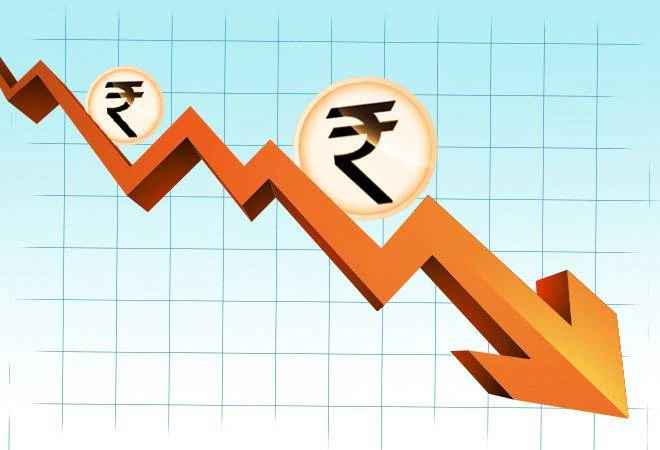Font size:
Print
World Health Day
Context: On World Health Day (April 7), nations across the globe reflect on the foundations of human well-being. India, under the leadership of Prime Minister Narendra Modi, stands as a beacon of transformative change, showcasing how health and sanitation are deeply interconnected.
More on News
- The 2025 World Health Day theme emphasises maternal and newborn health, a critical issue for India with a population of over 1.4 billion.
- Key government programs like Ayushman Bharat and Pradhan Mantri-Jan Arogya Yojana (PM-JAY) provide financial protection to over 500 million beneficiaries.
- Digital health innovations have shown significant promise in India. The Ayushman Bharat Digital Mission and eSanjeevani have collectively enabled over 10 crore teleconsultations.
Healthcare Challenges in India
- Public health funding remains a challenge. The 2025-26 Union Budget allocated ₹99,858.56 crore to the Ministry of Health and Family Welfare, amounting to only 1.97% of the total Union Budget.
- A significant concern is the rural-urban healthcare disparity: While 70% of the population resides in rural areas, only 35-40% of healthcare infrastructure is located there.
- To bridge this gap, increased investment in Tier-2 and Tier-3 cities and policies to encourage medical professionals to serve in underserved regions are necessary.
- Health and Wellness Centres (HWCs) have been set up to provide primary care, yet challenges like staff shortages, insufficient diagnostic facilities, and inconsistent medicine supplies continue to hinder their effectiveness.
Addressing India’s Disease Burden
- India faces a dual disease burden, grappling with both persistent infectious diseases and rising non-communicable diseases (NCDs), which now account for over 65% of all deaths.
- Lifestyle diseases, driven by poor diets, sedentary living, and tobacco use, have become major contributors. The International Diabetes Federation (2024) reported that 101 million Indians live with diabetes.
- Air pollution has also become a major public health threat, causing 1.6 million deaths in 2019, according to The Lancet.
- Malnutrition remains a major issue, with the National Family Health Survey (5) revealing that 35% of children under five are stunted and 57% of women aged 15-49 suffer from anemia.
- Government programs like Poshan Abhiyaan and Integrated Child Development Services aim to tackle malnutrition but need stronger data tracking, community engagement, and multi-sectoral coordination to be truly effective.
The Role of Sanitation and Water in Public Health
Swachh Bharat Mission (SBM) Grameen: A Game Changer in Rural India
- Launched in 2014 by Prime Minister Modi, SBM Grameen aimed to eliminate open defecation and improve sanitation across rural India.
- By 2019, India declared itself Open Defecation Free (ODF), surpassing global SDG 6.2 targets 11 years ahead of schedule.
- The SBM has a transformative impact on public health, preventing over 300,000 diarrhoeal deaths between 2014 and 2019 (WHO report).
- A study by the Gates Foundation (2017) revealed 58% higher cases of malnutrition among children in non-ODF areas.
- Economic benefits: ODF families save ₹50,000 annually in healthcare costs and experience improved savings (UNICEF study, 2017).
- Environmental impact: Groundwater contamination in ODF villages is 12.7 times less likely, ensuring long-term health resilience.
Jal Jeevan Mission (JJM): Ensuring Access to Safe Drinking Water
- Launched in 2019, the JJM aimed to provide clean drinking water to every rural household through a tap connection.
- Research by Dr. Michael Kremer, Nobel Laureate, found that safe drinking water could reduce infant deaths by 30% and prevent 136,000 under-five child deaths.
- WHO estimates suggest 4 lakh diarrhoeal deaths could be averted annually with universal access to safe drinking water.
- Empowering women: Women now save 5.5 crore hours daily that were previously spent fetching water, and the availability of water within households has increased women’s participation in agriculture and allied activities.
Sujal and Swachh Gaon Campaign: Holistic Public Health Transformation
- The Sujal and Swachh Gaon campaign integrates water, sanitation, and hygiene at the village level.
- Thousands of villages have been declared Swachh Sujal, a marker of comprehensive public health transformation.
- Improved sanitation and water access also reduce out-of-pocket health expenditures for rural households, reinforcing the preventive health-care model.
Key Impact on Rural India
- Over 80% of rural households now have tap water connections.
- More than 96% of villages are now ODF Plus (with systems for solid and liquid waste management).
- 5.23 lakh villages now have liquid waste management systems in place.
- 2.48 million women have been trained to test water quality, transforming women into water testers, sanitation entrepreneurs, and local leaders.
- Women-led Self-Help Groups are managing sanitation assets, recycling centers, and producing sanitary napkins, making them key players in local health transformation.
Sanitation and Water as the First Line of Defense in Public Health
- Sanitation and water systems act as the invisible shield that protects communities from diseases, especially in rural India.
- A toilet provides privacy, clean water brings opportunity, and waste management protects the environment.
- These initiatives have fostered a healthier, safer, and more productive society, where no child misses school due to a lack of water, and no woman has to walk miles carrying water.
Convergence of Ministries for Holistic Development
- India’s approach emphasises the convergence of health, water, sanitation, education, and rural development. Health is not solely the responsibility of the Ministry of Health; it requires collaboration across various sectors.
- The use of technology, such as real-time dashboards, and innovations like GOBARdhan biogas plants and plastic waste management units, has been key to success.
Global Impact and Vision of a Viksit Bharat
- India’s model is not only locally transformative but also serves as a global blueprint for the Global South. India’s experience shows that investing in WASH (Water, Sanitation, and Hygiene) leads to multifold returns in health, productivity, gender equity, and environmental sustainability.
- On World Health Day, India reaffirms its commitment to sharing its journey with the world and working together for a cleaner, healthier, and more resilient planet.
The Road Ahead
- India’s health objectives are aligned with Sustainable Development Goal 3, which emphasises good health and well-being. Developed nations typically focus on universal health insurance, public health infrastructure, and early childhood interventions—areas in which India needs rapid progress.
- India’s G20 presidency in 2023 showcased its leadership in vaccine equity, digital public goods, and health diplomacy. Aligning with global frameworks like the International Health Regulations and the Global Health Security Agenda will bolster India’s pandemic preparedness and international health collaboration.
- High out-of-pocket health expenses push approximately 55 million Indians into poverty every year. Moving towards preventive healthcare, including screenings, school-based health programs, and public health campaigns, is essential to reduce long-term health costs.
- India’s health system must view health not just as a social obligation, but as a strategic investment. With a cohesive, inclusive, and well-funded health system, India can move closer to achieving ‘Health for All’.


